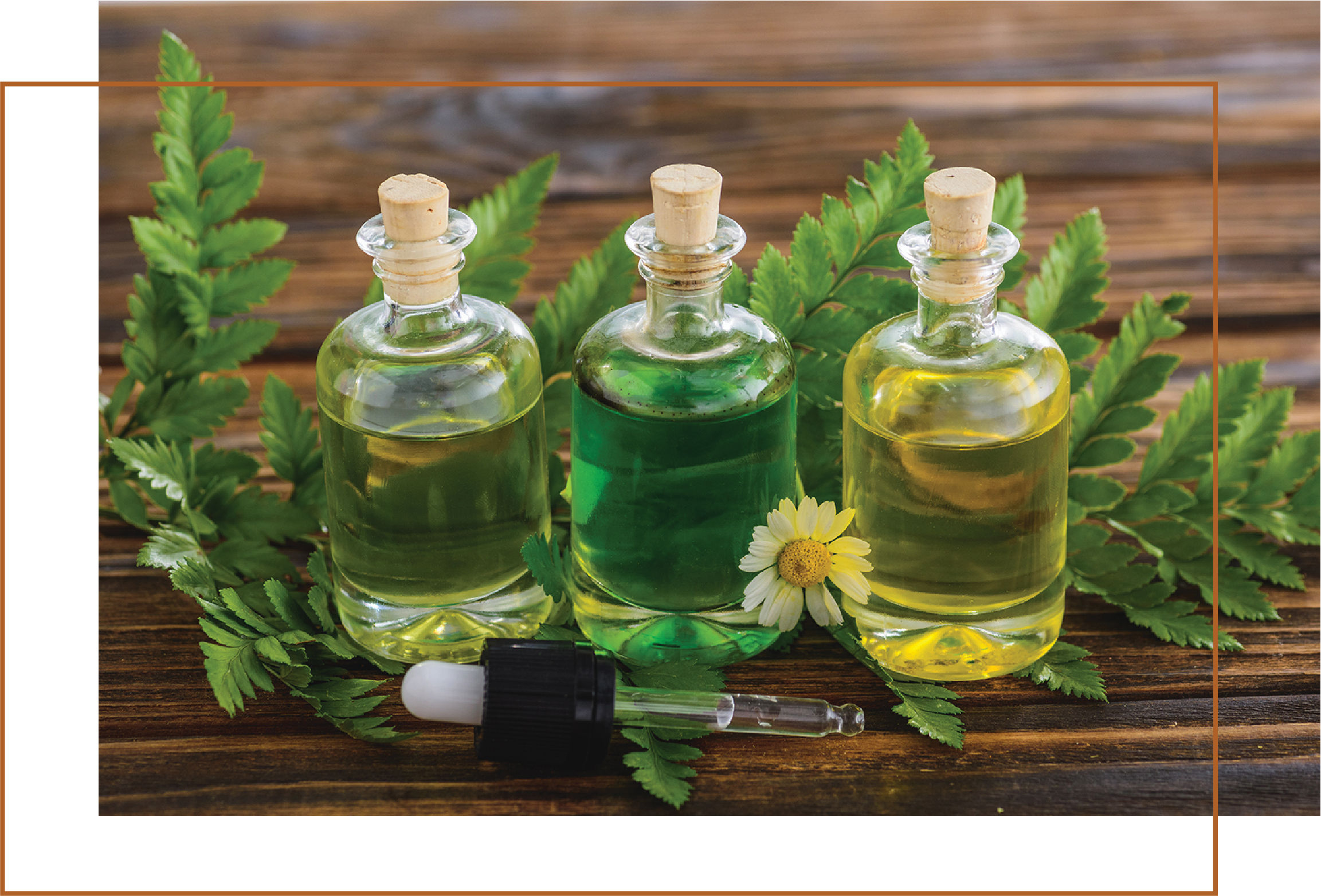Clear 2 µBiomic
Dysbiosis Disruptor
A potent blend of targeted natural ingredients and oils to purge unwanted pathogens to allow for healthy gut restoration and a balanced microbiome.
A potent blend of targeted natural ingredients and oils to purge unwanted pathogens to allow for healthy gut restoration and a balanced microbiome.
Take 1 capsule on an empty stomach daily for 10 days, then repeat another 10 day cycle as necessary, or take as directed by your healthcare professional. We recommend combining Clear 1 μBiomic and Clear 2 μBiomic with a detox protocol to ensure that the body has the proper drainage in place to enhance the purging of undesired pathogens and toxins that come with them.
To achieve optimal results, Clear 1 μBiomic and Clear 2 μBiomic should be used together, followed by targeted re-feeding with μBiomic probiotics and Superfoods (prebiotics).
**Individual needs may vary; please consult your practitioner before altering the prescribed doses or protocols.

Dysbiosis refers to an imbalance in the microbial communities that inhabit the human body. Clear 2 μBiomic addresses all aspects of the microbiome. Some studies suggest that a significant portion of the population will experience some degree of dysbiosis at some point in their lives. This imbalance occurs when pathogenic microbes, such as Salmonella, Escherichia coli, certain yeast and fungal species like Candida, intestinal parasites like Giardia and Entamoeba histolytica, and certain viruses, infect or overgrow in a microbiome.

Dysbiosis specifically refers to a disruption in the composition, diversity, or function of the healthy microbiome due to these pathogenic microbes. This disruption creates the perfect environment for biofilms to develop, leading to a cycle of repeatedly failing treatments. Additionally, dysbiosis may contribute to a range of other health concerns including digestive disorders, inflammation, weakened immune function, nutrient absorption problems, mental health decline, weight gain, metabolic disorders, leaky gut, autoimmune conditions, allergies, food sensitivities, and an increased risk of infections.
Clear 2 μBiomic stands out as the prime choice for pathogen elimination, backed by 15 years of personal and national research. Focusing exclusively on evidenced-based plant compounds, we’ve sourced ingredients from all over the world and meticulously crafted a product that eradicates pathogens through various mechanisms. These methods include disrupting cell walls, generating localized free radicals to damage cellular structures, interfering with metabolic processes and cellular respiration, breaking down protective coatings, and affecting the life cycle of parasites. With this full spectrum formula, we are able to effectively eradicate parasites, bacteria, fungus, yeast, molds, and viral pathogens without compromising the populations of beneficial microbes.
Biofilms are matrices produced by harmful microbes to protect themselves. Once embedded in biofilms, these microbes can become incredibly difficult to eliminate with traditional pharmaceuticals because the medications can’t reach the cells. Clear 2 µBiomic utilizes natural ingredients that are capable of breaking down biofilms and eliminating the microbes that form them, preventing further harm.
Dysbiosis, an imbalance in the microbiome, can occur due to various factors, including poor diet, inadequate sleep quality, certain prescription medications, recurrent antibiotic use, high stress levels, and more. Clear 2 μBiomic works to eliminate the overgrowth of harmful and pathogenic microbes without harming the beneficial microbes.
Dysbiosis can lead to compounding health problems. An immune system that is constantly battling overgrowth of harmful microbes, can become dysfunctional and start attacking the body. Additionally, the immune system can become overwhelmed to the point of losing its ability to fight regular infections effectively. Digestion and intestinal health may also be compromised, leading to gastrointestinal distress, disorders, and issues with nutrient absorption, such as in the case of small intestine bacterial overgrowth (SIBO). Eliminating dysbiosis with Clear 2 μBiomic can help address these health concerns effectively.
Infections and overgrowths of bacteria, yeasts, fungi, and other pathogens are typically treated with prescription medications or left to run their course and resolve on their own. However, the immune system can struggle to clear these infections without intervention. Moreover, the overuse of antibiotics has led to the emergence of antibiotic-resistant bacteria becoming more prevalent in the community. Clear 2 μBiomic offers a natural approach to managing harmful microbes with research-backed ingredients that can help restore the microbiome to its intended form and function.
The following describes the organisms eliminated through antimicrobial activity, migrating motor complex (MMC) correction, peristalsis, and the management of mechanical and digestive functions with ingredients used in Clear 2 μBiomic.
Parasites are organisms that thrive at the expense of their hosts, potentially causing a range of health issues. They can infect humans and animals, leading to conditions such as gastrointestinal symptoms, fatigue, skin problems, respiratory symptoms, fever, muscle and joint pain, swelling, allergic reactions, nutritional deficiencies, neurological symptoms, liver and gallbladder problems, and cardiovascular symptoms. To maintain optimal health, it’s essential to eliminate parasites before they can cause long-term damage.
Pathogenic bacteria can disrupt the balance of the gut microbiome, leading to digestive issues, inflammation, weakened immunity, and nutrient absorption problems. Bacteria often form biofilms to protect themselves from environmental competitors. These biofilms can also harbor other types of microbes, such as fungi and parasites, that are not direct competitors, creating an increasingly difficult problem to manage. Biofilms are notoriously difficult to fully resolve and often require long-term antibiotic use.
Fungus, yeast, and mold can be harmful because they can release harmful toxins and cause infections, allergies, respiratory problems, digestive discomfort, skin infections, and systemic infections. It’s important to address these issues before they lead to long-term health conditions.
Viruses can infect intestinal cells that regulate immunity, leading to a cascade of dysbiosis and health concerns related to the immune system.
The natural antimicrobials in Clear 2 μBiomic combat pathogenic microorganisms effectively. Clear 2 μBiomic disrupts pathogen cell membranes, making them more permeable and ultimately leading to cell death. These antimicrobials also interfere with microbial metabolism, inhibit reproduction, break down protective pathogenic biofilms, release toxins harmful to microorganisms, and disrupt communication between them. Additionally, some offer antioxidant and anti-inflammatory effects, aiding in mitigating damage from infections and supporting the immune response.

Specific fatty acids, such as undecylenic acid, caprylic acid, and lauric acid, have the ability to target a wide range of microorganisms, including bacteria, fungi, and even some parasites. By interfering with the integrity of the cell membrane, these fatty acids inhibit the growth and replication of these microorganisms, making them valuable for addressing various infections and promoting overall health. This offers a natural and effective means of maintaining microbial balance.
Undecylenic acid is a natural fatty acid derived from the Ricinus communis plant, and is a main component of castor oil. It is often used in various products and supplements for its antifungal and microbial balancing properties. Undecylenic acid has been studied for its ability to combat pathogenic microbes, particularly fungal infections caused by Candida species.1
Glycerol monolaurate (GML) is naturally present in human breast milk and contributes significantly to breast milk’s ability to fight pathogens without harming beneficial bacteria. GML has demonstrated antimicrobial properties against various bacterial pathogens, including Staphylococcus aureus, Bacillus subtilis, Clostridium perfringens, and Escherichia coli. Additionally, GML exhibits potential anti-inflammatory effects.2
Magnesium caprylate is a form of magnesium that is combined with caprylic acid, a medium-chain fatty acid derived from coconut oil. Research has shown that these compounds support a healthy microbiome.3
Bee propolis is a resin-like compound composed of fatty acids, amino acids and minerals. This versatile compound is produced by bees for hive construction, and is primarily used to prevent infection and infestation of the hive. It is reported that bee propolis may improve the intestinal barrier and modulate the gut microbiome by reducing population levels of harmful bacteria.4,5
Volatile oils, often referred to as essential oils, are concentrated natural compounds extracted from various plants, flowers, and herbs. These oils possess potent antimicrobial properties due to their complex chemical composition, which includes compounds like terpenes, phenols and more. They disrupt pathogenic microbes by affecting cell membranes, metabolism, and reproduction, eliminating harmful microorganisms like parasites, viruses, bacteria, and fungus while sparing the beneficial ones.
Oregano oil has historically been used to alleviate digestive issues. It possesses strong antimicrobial properties, primarily attributed to compounds like carvacrol and thymol, which disrupt microbial cell membranes and inhibit key enzymes, leading to cell death. This makes oregano oil effective against parasites, bacteria, fungus, and viruses. Additionally, it exhibits antioxidant and anti-inflammatory activity.6,7
Thyme oil has been shown to improve the strength of the intestinal barrier, reduce oxidative stress, and promote the growth of beneficial microbes.8
Basil oil can suppress the growth of Escherichia coli in the intestine without reducing the population of beneficial Lactobacillus species.9
Pine oil is a powerful antioxidant and has antimicrobial activity against food borne pathogens.10
Phytochemicals found in eucalyptus, including eucalyptol, α-pinene, quercetin, hyperoside, terpinen-4-ol, pentane-2,4-dione, citronellal, isopulegol, camphor, and limonene, each possess their own antimicrobial activity. Eucalyptus exhibits antibacterial, antiviral, antifungal, antiparasitic, anti-inflammatory, and decongestant properties and effects.11
Tarragon oil possesses strong antioxidant properties and antimicrobial activity, making it a great candidate for managing and alleviating inflammation and dysbiosis.12
Peppermint oil can interact with immune cells in the intestinal tract that respond to pathogenic bacteria, inhibiting their growth. Additionally, it has the ability to scavenge free radicals, thereby preventing oxidative stress.13
Sage oil can support the immune system by stimulating the gut.14 It also offers anti-cancer, anti-inflammatory, antioxidant, wound-healing and neuroprotective benefits.15
Palmarosa oil has been shown to destroy biofilms and kill E. coli with incredible effectiveness; sometimes reducing the population of E. coli completely in in vitro studies.16
Dill has historically been used to treat colic and gas in children. It has also been shown to possess antibacterial and antifungal properties that can help maintain a healthy microbiome. Additionally, the administration of dill seed oil has been found to aid in healing gastric lesions.17
Avocado oil is primarily composed of oleic, palmitic, and linoleic acids, which can aid in lipid metabolism in the gut, reduce inflammation, and improve the gut microbiome with its antimicrobial properties.18
Ginger has been used for thousands of years to treat diarrhea, nausea, and other gastrointestinal distress symptoms. It possesses antimicrobial, antioxidant, immunomodulatory, anti-inflammatory, and anti-cancer properties, which makes it a valuable ingredient in this formula.17
Various plant parts can be preserved in ways that extract their valuable compounds without compromising their quality. These methods may involve extraction with water or ethanol, as well as drying or freeze-drying. These extracts maintain or even elevate their potency, making them particularly useful in combating parasites, bacteria, fungi, and viruses.
Hedyotis diffusa is an herb used in traditional Chinese medicine, known for its reported anti-cancer effects. It has been shown to fight Helicobacter pylori, a common bacteria responsible for upper gastrointestinal tract infections. Additionally, studies using H. diffusa to treat acne have demonstrated its ability to reduce chronic inflammation created or worsened by bacterial involvement.19,20
The forest flame tree flower comes from a species of tree named Butea monosperma, native to the tropical areas of South Asia. It has long been used to treat various ailments including diarrhea, dysentery, and jaundice, thanks to its antioxidant, anti-inflammatory, antimicrobial, and antiviral properties.26
Olive leaf exhibits strong antibacterial and antifungal effects, particularly against common foodborne pathogens such as Escherichia coli, Klebsiella pneumoniae, Staphylococcus aureus, Salmonella typhimurium, Listeria monocytogenes, Aspergillus flavus, Pseudomonas aeruginosa, Candida albicans, and Candida neoformans. This is particularly useful as antibiotic resistance continues to expand to more species of harmful bacteria.21,22
Lemon balm exhibits impressive antibacterial properties against pathogenic bacteria, sometimes surpassing the effects of prescription antibiotics.23
Chamomile, used in traditional medicine for centuries, possesses both antimicrobial and antiparasitic properties. It has demonstrated the ability to reduce intestinal inflammation caused by infection. These attributes make it a valuable addition to Clear 2 μBiomic.24,25
Studies have shown ginger root powder to positively alter the gut microbiome, improve intestinal barrier function, and reverse antibiotic-associated diarrhea.27,28
Coriander seed can inhibit the growth of harmful intestinal bacteria while leaving the beneficial populations of Lactobacillus and Bifidobacterium unharmed.29
Nettle has interesting and valuable immunomodulatory effects due to its chemical composition. It has been reported that the phytochemicals found in stinging nettle can be utilized by the gut microbiome and may be used to ameliorate inflammatory bowel diseases.30,31
Do not take while pregnant or breastfeeding.
**It is always recommended that you consult your practitioner prior to adding any new supplement to your regimen if you are pregnant, breastfeeding, experiencing renal failure, undergoing an organ transplant(s), managing diabetes with insulin, or are taking medication(s) for any pre-existing conditions**
All ingredients are tested before use for: